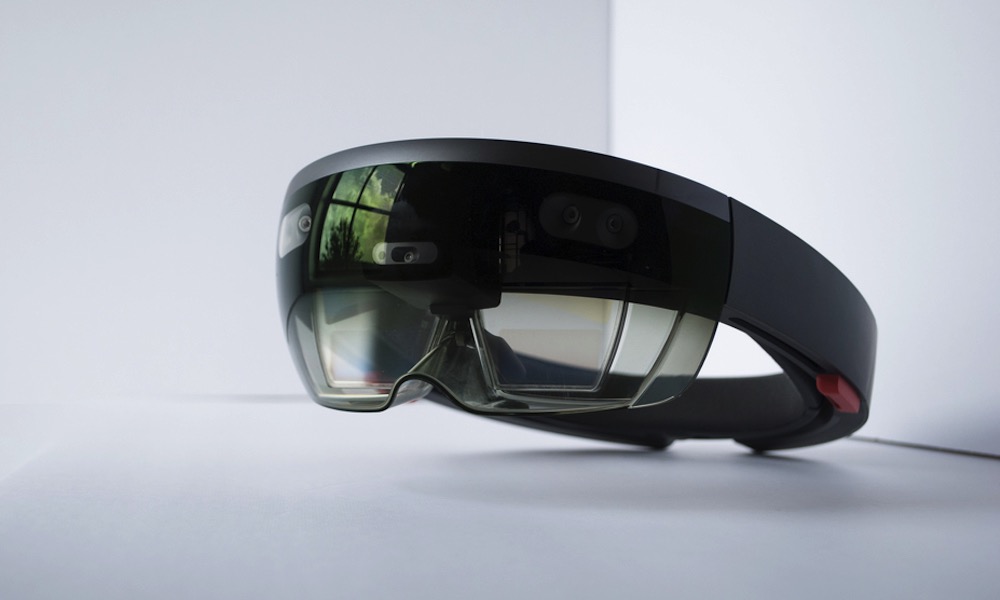A More Affordable Model of Apple’s ‘Reality Pro’ Headset is Coming
 Credit: ellaria / Shutterstock
Credit: ellaria / Shutterstock
Toggle Dark Mode
Apple is almost sure to take the wraps off its highly anticipated AR/VR mixed-reality headset during its Worldwide Developers Conference (WWDC) Keynote next month, but by all reports, the actual headset won’t go on sale until later this year — and when it does, it’s expected to be a pricey affair that will be very cool but also out of reach for most consumers.
Although we’ve been hearing about Apple’s AR/VR headset ambitions for years, those plans began to gel in early 2021 when The Information reported that it was likely going to land in the neighborhood of $3,000 — a price that would make it the most expensive mobile device Apple has ever sold.
The $10,000 18K Gold Apple Watch Edition arguably beats that out, but it’s fair to say that doesn’t count. Inside the gold body was the same Apple Watch model that could otherwise be picked up for well under $1,000, so the inflated price tag came entirely from the materials rather than the technology.
In the case of Apple’s headset, the high price tag — which analysts and leakers have repeatedly agreed will be well north of $2,000 — is entirely a result of the kind of technology that Apple is packing into the so-called “Reality Pro.” As both The Information and Bloomberg’s Mark Gurman reported over two years ago, this isn’t going to be a product designed for the masses — at least not in its first iteration.
Even back then, Gurman’s sources said that the company isn’t expecting to sell more than one headset per day per retail store — at best — which would put the annual sales somewhere around 180,000 units. By comparison, Apple sells a couple hundred million iPhones each year.
A More Affordable Model in the Works
The good news, though, is that it looks like Apple doesn’t intend to keep it that way. Instead, it appears the company wants to release the most powerful model first to put its best foot forward and show the world what the “Reality Pro” can do.
While that name is just a placeholder for now — nobody is sure what Apple will ultimately call its new headset — to use Apple’s usual naming standards, there’s another “Reality” headset that’s expected to arrive down the road, providing a more affordable option for everyday consumers who want to adopt the new technology.
Earlier this year, analyst Ming-Chi Kuo shared news from supply chain sources that Apple has two headsets in the works. Now he’s reiterated that earlier prediction, adding that Apple is preparing a second generation of its headsets that will include two versions, “a high-end and a low-end.”
These aren’t expected to go into production until 2025, but Kuo notes that shipments are expected to be ten times those of the “Reality Pro” that Apple plans to unveil at WWDC and (hopefully) begin selling later this year.
This lower-cost version will likely use less expensive components, such as lower-resolution displays and less powerful Apple Silicon, to give it a price tag that will appeal to a broader customer base.
However, Kuo suggests that this will also be accompanied by a second-generation model of the premium headset. Presumably, at that point, Apple will divide the product lineup into two tiers like it’s done with just about every other product family, from the AirPods and iPhone to the MacBook and iPad.
By then, Apple likely hopes developers will have jumped on board and created a robust ecosystem of apps for the new headset, making it even more of a must-buy product. Some have likened Apple’s upcoming headset launch to how the Apple Watch arrived in 2014, and it’s not hard to see the parallel here.
Apple announced its first wearable in the fall of 2014, allowing developers to begin creating apps for its new watchOS operating system. The first Apple Watch went on sale about nine months later, in the spring of 2015, as a relatively unfocused product compared to what it’s since become. Even the software development platform didn’t stabilize until watchOS 2 came along later in 2015, allowing developers to create native apps that could run directly on the wearable rather than running from the paired iPhone.
While the “Reality Pro” will undoubtedly be capable of running its own apps, most reports indicate the first-generation model will still be closely linked to an iPhone. Further, like the original Apple Watch, the headset is expected to include a broad array of apps and features in the first version, allowing Apple to get feedback from customers and third-party developers as to what they really want a headset to do, in much the same way the Apple Watch adopted a much more specific focus on health and fitness.
[The information provided in this article has NOT been confirmed by Apple and may be speculation. Provided details may not be factual. Take all rumors, tech or otherwise, with a grain of salt.]









